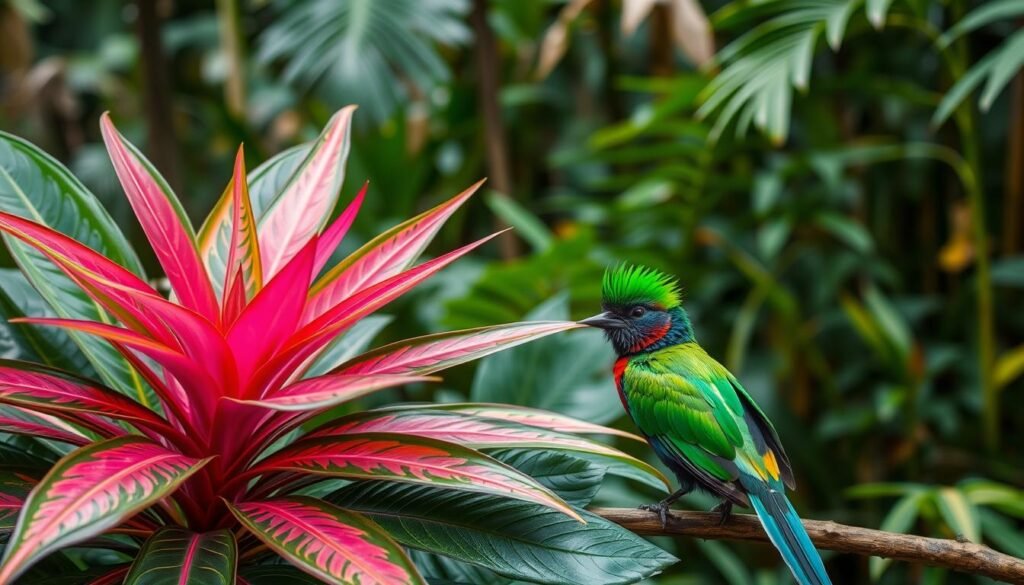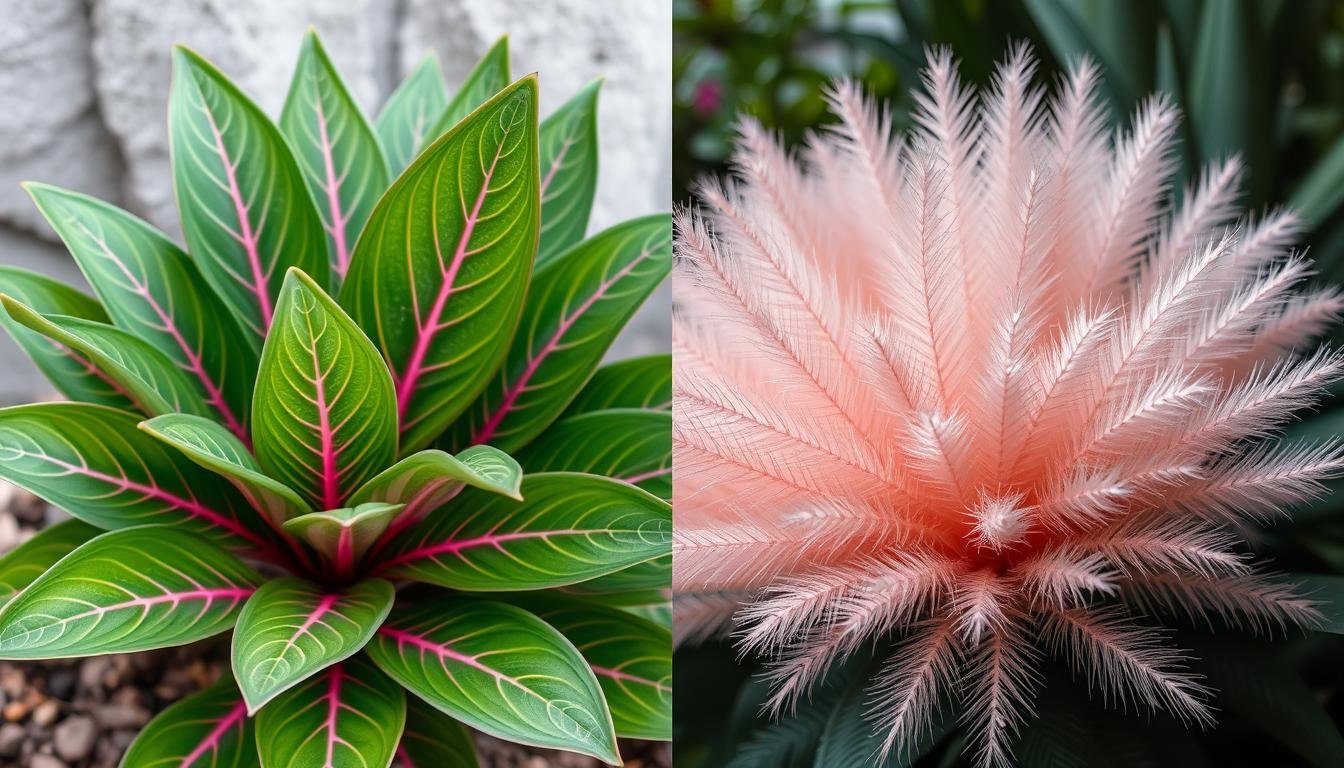As I explore the world of plants, a question keeps popping up: is celosa plant and prince of feather the same? Both belong to the Celosia family and are renowned for their bright, plume-like flowers available in vibrant colors such as orange, pink, red, and green. However, there are two main types to consider: Celosia plumosa, commonly known as the Prince of Feather plant, and Celosia cristata, which features a unique cockscomb shape.
Celosia plants thrive in warm environments and are typically grown as annuals because they cannot withstand frost. Depending on the variety, a Celosia plant can grow anywhere from 30cm to 1m tall. In Japan, numerous hybrids have been developed, making Celosia a favorite among gardeners for its versatility and striking appearance.
In this article, we’ll address the central question: is celosa plant and prince of feather the same? We’ll delve into their distinct features, care requirements, and optimal growing conditions to help you determine which Celosia variety is best suited for your garden.
Key Takeaways
- The celosia plant and prince of feather plant both belong to the Celosia genus.
- Celosia is known for its vibrant blooms and can be found in colors like orange, pink, red, and green.
- There are two main types of celosia: Celosia plumosa and Celosia cristata.
- Celosia plants flourish in warm climates and are typically treated as annuals due to their frost sensitivity.
- This genus includes 46 species and is part of the larger Amaranthaceae family.
Table of Contents
Introduction to Celosia and Prince of Feather
Celosia plants and the Prince of Feather are often talked about in gardening. They have striking leaves and bright flowers. The celosia plant, especially from the Celosia argentea family, is known for its many varieties and beauty.
These plants have unique flower shapes and bright colors. They catch the eye of both casual gardeners and those who love flowers.
The Prince of Feather usually means the Celosia plumosa species. It’s known for its feathery flowers. These flowers add texture and excitement to gardens or flower arrangements.
The Prince of Feather’s bright colors make it a favorite among ornamental plants.
Both celosia plants and the Prince of Feather add beauty to gardens and homes. They grow well in different places and have long-lasting flowers. This makes them popular in flower displays.
Understanding the Celosia Plant
Celosia is a fascinating genus with many species. They charm gardeners with their unique features. Celosia argentea and Celosia plumosa are popular for their special flowers.
Celosia plumosa has plume-like flowers, like Prince of Wales’ feathers. Celosia argentea, or cockscomb, has ruffled blooms like a rooster’s comb. These unique textures and shapes make celosia a standout in gardens.
Overview of Celosia Varieties
The two main types I love are Celosia argentea and Celosia plumosa. They come in vibrant colors like reds and yellows. Cockscomb grows up to 12 inches tall and wide, thriving in zones 9-12.
Celosia plumosa has feather-like flowers that grow upright. This gives a different look for gardeners. Knowing these differences helps me enjoy planting celosia more.
Characteristics and Growth Conditions
Celosia plants need full sun and dry soil to grow well. They’re great for containers and xeriscaping. I make sure they get at least six hours of sunlight a day.
But, they shouldn’t get too much water. Too much can cause stem and crown rot. Keeping air moving and sunlight right helps avoid fungal diseases.
Despite their beauty, pests like mites can be a problem. I watch my celosia for signs of mites, like brown-bronze leaves. Staying alert keeps my plants looking vibrant all season.
Planting celosia is rewarding if you understand its needs. It’s all about knowing what makes them special.
What is the Prince of Feather Plant?
The Prince of Feather plant, also known as Celosia plumosa, is known for its beauty. It grows bushy and has plume-like flowers up to 30 cm long. These flowers are in colors like orange, pink, and red, making it great for gardens and flower arrangements.
Plant Description and Features
The flowers of the Prince of Feather plant are not only pretty but also edible when young. They can grow in many places, making them popular. The plant can grow quite tall, making it a highlight in any garden.
It takes about seven to fourteen days for Celosia plumosa to germinate under the right conditions.
Growth and Care Requirements
To care for the Prince of Feather, you need to know a few things. It loves sunny spots with good air flow. It grows best in warm, subtropical climates.
Watering is key, but don’t overdo it. Too much water can cause fungal problems. Fertilize every few weeks when it’s blooming to keep it healthy and colorful.
The plant prefers well-draining soil with lots of organic matter. It can handle some drought but does best with plenty of moisture and warmth. In cold areas, treat it as an annual because it can’t handle frost. But in warmer places, it can grow all year.
For more on another beautiful plant, the birds of paradise, see this great resource.
is celosa plant and prince of feather the same

Simple answer is no. Exploring if the Celosa plant and Prince of Feather are the same leads to understanding their place in the Celosia family. Celosia plumosa is known as the Prince of Feather. Knowing this is key for gardeners to grow them right.
Both names point to special traits, yet they belong to different parts of the Celosia family. Celosia plants love hot weather and grow as perennials in zones 8 to 10. In cooler places, they are grown as annuals because they can’t handle frost.
Celosia plumosa has plume-like flowers, great for creative flower arrangements. These plants can grow from 30cm to 1m tall. Their flowers can get up to 30cm big. It’s important to think about sunlight and water for them to grow well.
Knowing the differences between these plants helps gardeners succeed. But, they must also watch out for pests and diseases. For more on famous artists, check out this link.
Comparing Celosia and Prince of Feather
Celosia and Prince of Feather are both beautiful additions to gardens. Their bright colors and unique textures grab everyone’s attention. This comparison shows how each plant’s plant appearance is special, making them favorites for displays and arrangements.
Similarities in Appearance
Celosia and Prince of Feather look alike in many ways. They both have bright colors that make any outdoor space pop. Their flowers are fuzzy or spiky, giving them a unique look. Gardeners love these features for adding interest to their designs.
Differences in Care and Cultivation
When it comes to care differences, knowing what each plant needs is key. Celosia likes moderate watering and can handle different soils. On the other hand, Prince of Feather needs more water and prefers warmer weather. Understanding these needs helps gardeners grow each plant successfully.
Botanical Classification
Learning about Celosia’s botanical classification helps us understand how it grows. It belongs to the Amaranthaceae family. This family includes interesting species like Celosia argentea and Celosia plumosa. These plants are known for their unique looks and bright colors, making them great for gardens and flower arrangements.
Scientific Names and Family
Celosia has many scientific names. For example, “Celosia argentea” is a broad term. On the other hand, “Celosia plumosa” refers to the plume flower type. “Celosia cristata” is known as cockscomb. This variety shows how different these plants can look and grow.
The Prince of Feather is also part of the Celosia genus. This adds to our appreciation of its classification.
Common Synonyms for Both Plants
Celosia has many synonyms over the years. For instance, “cockscomb” is another name for Celosia cristata. “Wheat celosia” is what we call Celosia spicata. The Prince of Feather is also known as “Prince of Wales’ feathers.”
Knowing these synonyms helps gardeners talk and identify plants better. It makes it easier to care for these plants when we’re shopping or giving gardening tips.
| Scientific Name | Common Name | Type |
|---|---|---|
| Celosia argentea | Celosia | General Species |
| Celosia plumosa | Plume Flower | Species Variant |
| Celosia cristata | Cockscomb | Species Variant |
| Celosia spicata | Wheat Celosia | Species Variant |
| N/A | Prince of Feather | Common Name |
Growing Celosia: Tips and Techniques
To grow Celosia well, you need to know the best conditions and care. Good growing tips can really help your plants thrive. We’ll look at soil, light, watering, and fertilization.
Best Soil and Light Conditions
Celosia loves soil that drains well and has organic matter. This gives them the nutrients they need. They do best in full sun, needing at least six hours of direct sunlight a day.
Start seedlings indoors and harden them off before moving them outside. This helps them adjust better.
Watering and Fertilization Needs
Watering Celosia right is key. Keep the soil moist but not too wet. Too much water can cause root rot and yellow leaves.
Use a balanced fertilizer every two weeks when they’re growing. This helps them grow strong and bloom well. Keep an eye on your Celosia to make sure they get the right amount of water and food.
| Aspect | Recommendation |
|---|---|
| Soil Type | Well-drained, organic-rich |
| Light Conditions | Full sun (minimum 6 hours) |
| Watering Frequency | Moderate; avoid waterlogging |
| Fertilization | Bi-weekly balanced fertilizer |
Prince of Feather Care: Essential Guidance
Caring for the Prince of Feather plant needs attention to its specific needs. This includes temperature and humidity. It’s important to know the best conditions for growth to keep this beautiful plant healthy and vibrant.
The temperature should stay above 65°F (18°C). Also, good airflow is key to prevent problems from too much moisture.
Optimal Growing Conditions
To get the best results, keep the soil consistently moist but not too wet. These plants love filtered light, especially afternoon shade in warm places. This protects them from too much heat.
It’s also important to watch for pests like whiteflies. Regular checks help catch any problems early, so you can act fast.
For more tips on care and other celosia varieties, check out this resource. It has lots of advice on growing and caring for celosia plants all year round.




